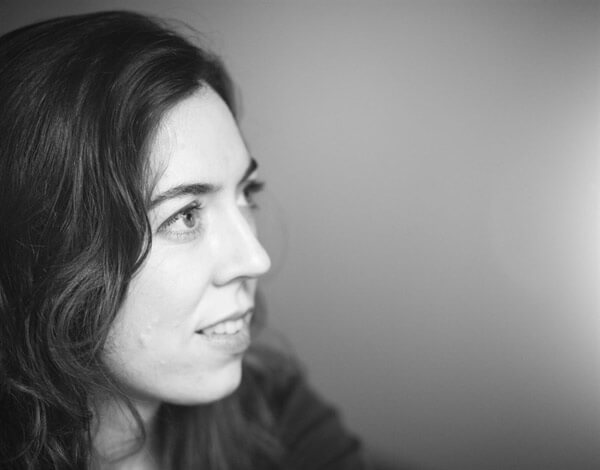 With composers hailing from France, Germany, England or the US, this fourth night of SONiC Festival was showcasing a vast array of idioms from young composers (under 40—the magic cut off). The pièce de resistance was Jonny Greenwood’s US premiere of Smear.
With composers hailing from France, Germany, England or the US, this fourth night of SONiC Festival was showcasing a vast array of idioms from young composers (under 40—the magic cut off). The pièce de resistance was Jonny Greenwood’s US premiere of Smear.
In Vivo Part I was the first movement of an upcoming string quartet by French composer Raphaël Cendo (a student of Philipe Manoury). A study in “speed, intensity, density, pressure and power of each of the four instruments”, the piece is an immersive sonic experience: violins screech, glissendi make one dizzy, bows moan, etc. Seeing aluminum foil around the bridge of the violins, viola and cello somehow reminded me of Varese’s Density 21.5 (what is the density of aluminum?), and almost led to believe that pushing the strings to the limits could generate heat! I would love to hear the rest of the quartet…
Some other pieces were not as successful at delivering a coherent idea. According to Hans Thomalla, his Piano Counterpart is a rhapsody and indeed features episodes, strong contrasts in mood, hints at improvisation, but in the driest sense possible. The detailed description that the composer gives in the program notes didn’t really help discovering this piece whose idiom (too reminiscent of Darmstadt’s?) seemed outdated.
Richard Carrick, co-founder and co-director of Either/or also had a piece presented that night, à cause du soleil for strings trio (violin, viola, and cello). The piece is part of an longer work, Flow Cycle, influenced by Islamic Mosaics, Gnawa music of Morocco, Albert Camus’ L’Étranger, and the Flow concept of Csíkszentmihályi (a theory that people are most happy when they are in a state of flow— a state of concentration or complete absorption with the activity at hand and the situation, according to Wikipedia). Mouth watering. Of course, all these influences were interacting at a high level of abstraction (no augmented seconds for you my good sir) but a clear sense of narrative was present throughout the piece.

Erin Gee was next on stage and I was happy to see her again after a very impressive 2009 collaboration with her brother Colin: “Mouthpiece XIII Mathilde of Loci, Part 1” for the American Composers Orchestra. That night, she was performing Mouthpiece I/Yamaguchi mouthpieces/Akiguchi mouthpiece. Her work with phonemes is purely fascinating. Sometimes liquid, ethereal, or percussive, the sounds she conjures, vocally with a microphone in each hand, create a sonic storyboard. Mouthpiece I‘s text was drawn from the Rig Vega whereas the material from the Yamaguchi mouthpieces was taken from kakegoe, a japanese form of interjection found in japanese theatre, music, or even martial arts. Gee’s music is profoundly organic and poetic, and creates a immediate connection with her audience.
Keeril Makan’s piece for solo percussionist is a rich and engaging exploration of resonance. Makan designed a hyper instrument by putting a gong in contact with a hi-hat, touching two inverted cymbals, themselves respectively set on top of a snare drum and a floor tom. This clever contraption makes it possible for the performer to isolate certain idiophones from others, or to combine certain sounds together. Resonance alloy was driven by a fast and steady pulse that maintained a constant state of vibration that expressed itself differently based on the combinations of idiophones. The richness of some timbres was really amazing and David Shively (the performer and dedicatee of the piece) crafted what sounded like overtones melodies on the gong. The length of the piece is pretty much up to the performer, and I felt like it went on for a bit too much after it had already achieved a lot.

One doesn’t get to hear a premiere of a Jonny Greenwood piece everyday. Still, the theatre was not as packed as I would have expected to receive the music of one fifth of Radiohead. The whole point of Smear, Greenwood’s third incursion in the classical field, is to let us know how much he digs the ondes Martenot. He digs them so much he put two in the score (he will have to do better to beat this…). The intention behind Smear was also to get the instrument out of its musical ghetto, namely “1950s B-movies and 20th century French composers”. I was expecting a lot from this piece and what was delivered was rather disappointing. Greenwood did use the microtonal possibilities of the instrument while paired with the strings, and gave us a virtuosic duet in the middle section, but the angularity of the melodic lines and the overall gloominess of the piece seemed to point back to UFO sounds… Some crepuscular tutti showcased Greenwood’s nice orchestration chops but the piece was surprisingly very short, and there was so much more that could have been done with the orchestral forces that were gathered that night.
Either/or is a solid ensemble featuring top notch performers and their flexibility in terms of instrumentation is a strong assest. For more information, visit: http://www.eitherormusic.org
—
Thomas Deneuville, the editor of I care if you listen, is a French-born composer living in NY. Find him on Twitter: @tonalfreak






















